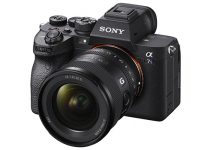Shooting in low light with a camera that provides staggering ISO performance such as the Sony A7S II or the A7R II doesn’t necessarily guarantee that you will always get the perfect exposure in every highly dimmed situation.
Moreover, the logical question that naturally arises here is what would you do when you don’t have a camera that provides exceptional low light capabilities? Simone Cade from DSLRguide shares his insights on the topic by offering a few interesting suggestions.
And, before you make a hasty conclusion and throw your old DSLR in the trash, make sure you spend five minutes on the insightful video essay below. The points that the young filmmaker covers are definitely worth it.
As we know, ISO digitally brightens your images, but this step of the process usually is considered as a last resort, because the higher the ISO is, the more grainy the image would be. Shooting at higher ISOs, however, also means that your camera becomes super sensitive to any light in your scene, even to the smallest ones. Instead of cranking up the ISO you can just lower it down to any considerable level and then use a set of additional lights to compensate for the underexposed parts of the image.
Even if you think that getting faster lenses is the only way to make up for the mediocre low light performance of your camera, probably it would be better to get a decent kit of lights instead. These are not only cheaper but will also help you to pull off successfully almost any low light scene. For instance, getting an inexpensive kit of fluorescent lights might give you enough light to keep your ISO in the low range, thus making the shooting situation a lot easier for your camera.
Plus, such a lighting kit offers infinite possibilities for controlling the light to get loads of different looks and moods, especially when it comes to night scenes. As-a-rule-fo-thumb, try to avoid the traditional 3-way lighting setup on those occasions. Instead, use more backlights just to see what’s going on in your scene and keep a decent balance between shadows and lights. Place the brightest source of light behind your characters and use the other smaller lights to add texture to your scene. Placing more lights in the background can also help you to put together a beautifully composed and well-lit night scene.
Even if you don’t have enough time to set up lights, or you just don’t have the permission to do so, you can still reconsider the location and find a better place to complete your scene. If changing the location is still not an option, remember that every room or building has its premium spot where there will be enough light to film accordingly. You just might need to find it.
The main takeaway from Simon’s video essay is that as filmmakers we never have enough time, money and rarely have enough light. So, instead of blaming our camera for its drawbacks, maybe we should try to find a workaround and complete the job with the available assets, instead of passively accepting the problem. What are your thoughts on the topic? Feel free to share in the comments below.
[source: DSLRguide]
Disclaimer: As an Amazon Associate partner and participant in B&H and Adorama Affiliate programmes, we earn a small comission from each purchase made through the affiliate links listed above at no additional cost to you.
Claim your copy of DAVINCI RESOLVE - SIMPLIFIED COURSE with 50% off! Get Instant Access!





A very good article!
Sincerely lights aren’t cheap at all, quite expensive, actually. So you have to make do with any non-professional light you can get your hands on, even a car’s front lights.